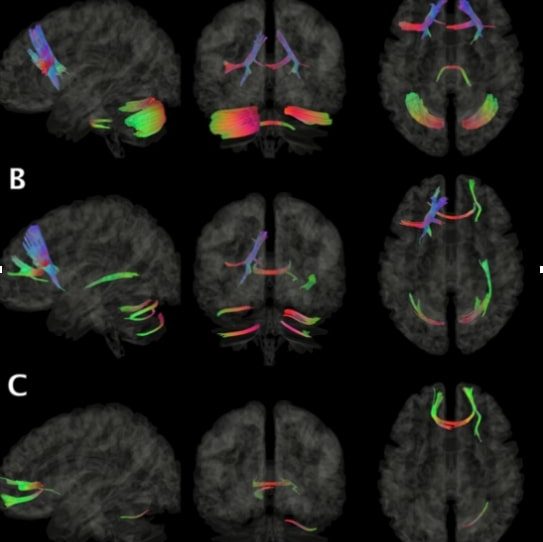HDFT: High Definition Fiber Tractography

There are two fundamental challenges that any traumatic brain injury (TBI) diagnostic methodology must solve. First, TBI involves damage to only relatively small amounts of tissue (only a few percent of the fibers). These small percentage injuries can cause extensive physical and functional impairment, just as losing one connection in the millions of connections of a laptop computer can make the computer nonfunctional. In the brain, we need to be able to comprehensively scan the cables of the mind for small breaks that alter human function. Detection is hindered because brains have substantial differences in cortical folding and tract structure. Second, diffusion tensor imaging (DTI) generally uses a fractional anisotropy (FA)-based measurement, which is confounded by any increases in interstitial fluid, such as edema or hematoma, making the scans generally uninterpretable during the acute phase of TBI. This is not an issue with high definition fiber tractography (HDFT).
This study will accomplish the following specific aims:
1) Collecting high resolution diffusion data.
2) Determine whether HDFT of major white matter tracts within normal range is associated with a normal neurologic examination, normal neuropsychological testing, and absence of post concussion syndrome post-injury.
3) Contrast differences in quantitative analysis of HDFT among civilian and military populations.
4) Determine whether quantitative analysis of HDFT can document and predict neurologic and neuropsychological deficits in veterans with TBI on the basis of quantitative analysis of major white matter tracts implicated in TBI.
5) Employ novel computational methods to accurately map a million connection streamlines of the brain and quantify connectivity in anatomically meaningful units.
The overall purpose of this study is to validate the High Definition Fiber Tractography / High Definition Fiber Tractography Asymmetry Screening (HDFT/HDFTAS) technology, so that faster, more reliable diagnosis can be implemented in traumatic brain injury (TBI).